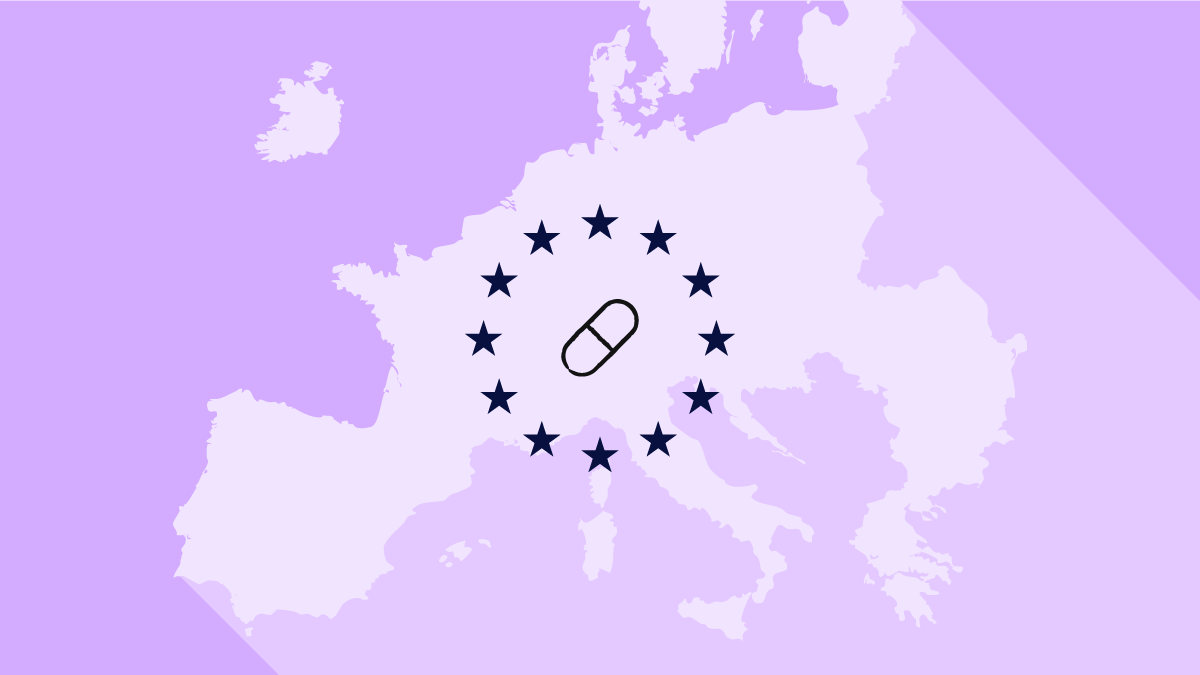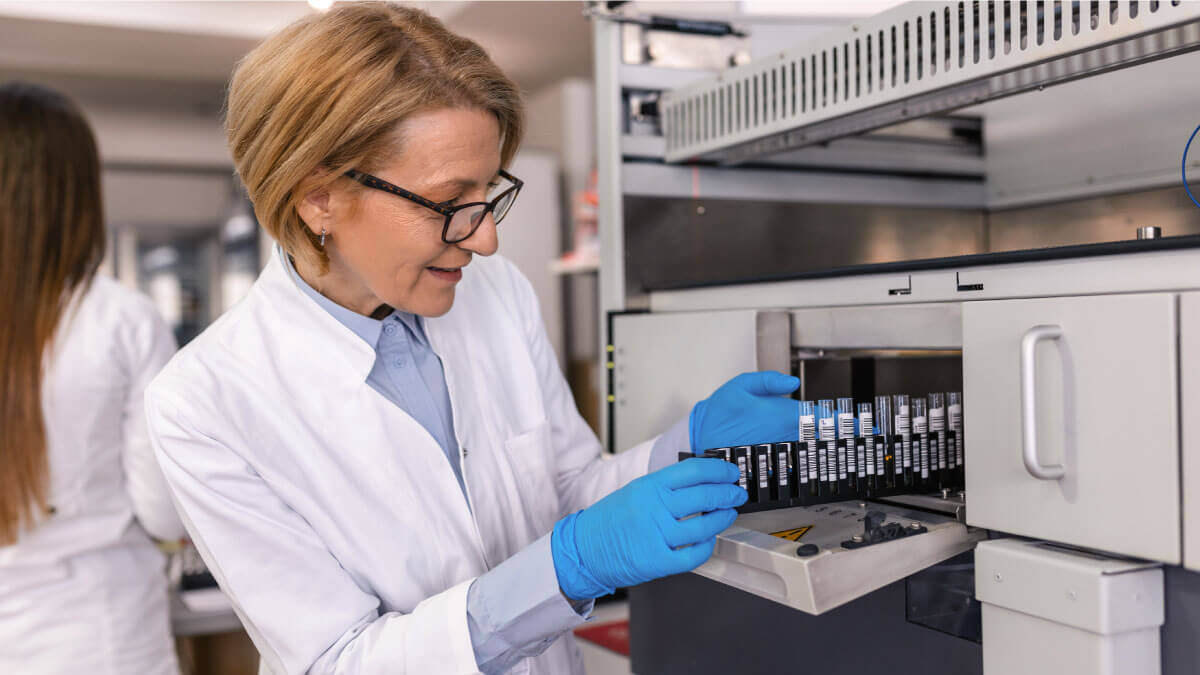
On November 25, 2020, the European Commission adopted the pharmaceutical strategy for Europe, an initiative that aims to transform the pharmaceutical landscape in the European Union.
The importance of this strategy lies in the fact that it addresses key challenges related to innovation, sustainability, and healthcare access.
Ultimately, the objective is to ensure a robust, resilient supply chain and to develop Europe's open strategic autonomy, so that it is capable of meeting its needs in crisis situations, such as the last COVID-19 crisis.
On April 26, 2023, the European Commission took a significant step forward by proposing a new Directive and Regulation to revise and replace existing pharmaceutical legislation, marking the most extensive reform in over two decades. These changes in legislation will foster patient access to innovative and affordable medicines.
The strategy's primary goals are to create a future-proof regulatory framework that promotes research, technological advancement, competitiveness, and improved patient access to therapies while applying sustainability principles as well.
It applies to the entire lifecycle of pharmaceutical products, including manufacturers, researchers, distributors, healthcare providers, and patients across the European Union.
In this post, we will explain why EU pharmaceutical legislation reform is important, how to implement the pharmaceutical strategy for Europe, current industry concerns, and provide tips if you are new to preparing for the strategy.
What is the scope of the EU pharmaceutical reform?
The EU pharmaceutical legislation reform is structured around four key pillars, each addressing specific challenges facing the life sciences. Let’s discuss them.
1. Medicines for all.
The first pillar is putting patients first. It aims to ensure that all European patients have equal access to safe, effective, and affordable medicine and medical needs under all circumstances.
Challenge:
According to EFPIA, currently, some Europeans are waiting up to an average time of 531 days to get new medicines, which results in unequal access to medicine across EU member states.
Goals:
The reform proposes a competitive system of incentives that rewards companies for launching products in all EU countries, including medicines for children, rare diseases, and antimicrobial resistance. It also aims to facilitate faster availability of generics and biosimilars to increase affordability.
2. Support competitiveness, innovation, and sustainability.
Challenge:
The EU life sciences sector faces significant challenges in maintaining its global competitiveness and fostering innovation while simultaneously addressing sustainability concerns. Intense competition from regions like the US and China, which are outpacing the EU in R&D spending and attracting more clinical trials for cutting-edge technologies, threatens the EU's position as a leader in pharmaceutical innovation.
This is compounded by the EU's complex regulatory framework, often perceived as burdensome and time-consuming, potentially deterring investment and slowing down the development and authorization of new medicines.
Additionally, the industry is struggling with the growing imperative to minimize its environmental impact, presenting a dual challenge: advance medical innovation while ensuring sustainability throughout the product's lifecycle.
Goals:
The EU pharmaceutical reform seeks to streamline regulatory processes, potentially implementing a rolling review system for innovative medicines to expedite authorization without compromising safety standards. It proposes a modulated incentive system to reward companies for addressing critical public health objectives, such as developing treatments for rare diseases or ensuring product launches across all EU member states.
Environmental sustainability is prioritized through the introduction of environmental risk assessments for new medicines and considerations for the entire product lifecycle.
Furthermore, the reform aims to establish a flexible, future-proof regulatory framework capable of adapting to emerging technologies and new approaches to evidence generation, supporting innovation in areas like personalized medicine and advanced therapies.
3. Prepare for future crises and address medicine shortages.
Challenges:
The COVID-19 pandemic exposed significant vulnerabilities in the EU's pharmaceutical supply chain. It exposed the EU's dependence on non-EU countries for active pharmaceutical ingredients (APIs) and other essential components. There was also a lack of transparency and insufficient risk mitigation mechanisms. These issues impacted effective shortage management and made the supply chain susceptible to disruption.
Goals:
The COVID-19 crisis highlighted the need for better coordination among EU member states and stakeholders to address systemic shortages and improve supply chain resilience. The goals of the EU pharmaceutical reform in addressing crisis preparedness and medicine shortages are:
- Improve transparency and coordination by establishing the Critical Medicines Alliance (CMA), which will facilitate collaboration among member states, industry, and stakeholders to tackle long-standing shortages and supply chain vulnerabilities.
- Establish the union’s list of critical medicines for the EU, including more than 200 active pharmaceutical ingredients that are considered essential for preventing potential shortages, implement shortage prevention plans, and develop a plan for managing risks of a common strategic approach to medicines stockpiling.
- Ensure that essential medicines and ingredients are produced in the EU by diversifying sources.
- Require pharmaceutical companies to provide more detailed information about potential shortages and supply chain problems.
4. Ensure a strong EU voice in the supply chain world.
Challenges:
There are several interconnected challenges facing the EU in ensuring a strong voice in the global pharmaceutical supply chain. For example, medicine access inequalities undermine the EU's collective bargaining power and internal cohesion.
The need for innovation in areas of unmet medical needs requires significant investment and coordination.
Supply chain vulnerabilities and medicine shortages highlight the EU's dependence on non-EU countries for critical components and finished products.
Additionally, the environmental impact of pharmaceutical production necessitates sustainable practices, which can affect competitiveness.
Balancing these issues while maintaining high standards of quality, safety, and efficacy, and preserving the EU's global competitiveness in the pharmaceutical market, presents a complex challenge that requires a comprehensive and coordinated approach.
Goals:
The EU pharmaceutical reform aims to establish global leadership in pharmaceutical standards and production. It seeks to enhance supply chain resilience through international partnerships and strategic collaborations. The reform focuses on creating an attractive environment for innovation within the EU while addressing supply chain vulnerabilities. It incentivizes research in areas of unmet medical needs and promotes sustainable pharmaceutical practices. Overall, the reform balances competitiveness, patient access, and environmental responsibility.

EU pharma implementation strategy
On November 25, 2020, the European Union adopted a comprehensive Pharmaceutical Strategy for Europe that outlines plans for reforming pharmaceutical policy and regulation. The proposed changes are part of the Commission's efforts to modernize and enhance the pharmaceutical framework within the European Union.
It was on April 26, 2023, when the European Commission adopted a proposal for a new Directive and a new Regulation to reform the existing general pharmaceutical legislation. This reform will affect Directive 2001/83/EC and Regulation (EC) No 726/2004.
Objectives of the new Regulation and new Directive
With the legislative amendments, the EU intends to ensure that all patients have access to safe, effective, and affordable medicines.
It also aims to increase the security of supply to ensure patients have access to medicines regardless of their location of supply.
The amendment also aims to create an attractive environment for research, development, and production of medicines in Europe, with a focus on addressing unmet medical needs.
Furthermore, it stresses making medicines more environmentally sustainable by reducing their environmental impact.
Key actions and initiatives
The new Directive introduces several key actions and initiatives to enhance the EU pharmaceutical framework.
Simplification and coherence: With the aim of simplification and increased coherence, relevant parts of the Orphan Regulation No 141/2000 and Paediatric Regulation No 1901/2006 will be incorporated into the pharmaceutical legislation applicable to all medicinal products by amending Directive 2001/83/EC.
This means that medicinal products for rare diseases and children will continue to adhere to the same quality, safety, and efficacy standards as other medicinal products, including marketing authorization and pharmacovigilance.
These specific requirements will be integrated into the new regulation and directive to ensure clarity and coherence.
Focus on Unmet Medical Needs: By creating incentives for innovation, the amendment promotes the development of medicines to meet unmet medical needs, particularly in the field of antimicrobial resistance.
Ensuring a stable supply chain: The amendment also introduces stronger obligations for marketing authorization holders to notify potential shortages, aiming to improve the security of supply and ensure continuous availability of medicines.
Environmental Sustainability: A number of other measures are included to reduce the environmental impact of medicines, aligning with broader EU environmental initiatives such as the European Green Deal.
Also in the Directive are pilot projects and studies on current challenges. It is worth mentioning:
- Market Launch of Centrally Authorized Products: This involves pilot projects that facilitate the introduction of medicinal products authorized at the EU level into national markets. The goal is to streamline processes and ensure that these products reach patients promptly and efficiently across all Member States.
- Studies on Medicine Shortages and Optimizing Public Procurement: These studies aim to identify the root causes of medicine shortages and develop strategies to address them. By optimizing public procurement processes, the initiative seeks to enhance the security of supply and ensure that medicines are consistently available to patients, thus reducing the burden on healthcare systems and improving treatment quality.
Recommended learning: Get insider tips to ensure supply chain compliance in the pharmaceutical industry!
Industry concerns
The pharmaceutical industry has raised several concerns regarding the proposed reform of the EU pharmaceutical legislation.
A primary concern is the inadequacy of incentives for innovation, particularly when it comes to addressing unmet medical needs. If incentives are not provided, the industry fears that the development of new therapies will be slowed down.
Additionally, there is concern about the balance between ensuring access and affordability of medicines while maintaining a competitive market environment. The reform's focus might impact pricing and reimbursement, which are crucial for the industry's economic sustainability.
In addition, while the reform is intended to simplify the regulatory framework, the industry is concerned that incorporating specific regulations for orphan and pediatric medicines into the broader legislative context could create complexities. This integration could lead to compliance challenges and increased administrative burdens.
The industry also is concerned about the operational and logistical challenges posed by new obligations on marketing authorization holders to notify shortages and interruptions.
Finally, while the industry's support for reducing the environmental impact of medicinal products aligns with the reform's goals, there is concern about the feasibility and cost implications of implementing these measures.
Scilife tips: How to prepare for the EU pharma strategy

We at Scilife think companies in the pharma industry should focus on a number of key actions and anticipate certain expectations ahead of the EU pharma strategy.
First and foremost, it is crucial to remain informed about legislative changes and understand their implications. Working with regulatory bodies and industry associations can provide valuable insights and assistance in navigating the complexities of the changes.
Companies should also invest in research and development to align with the strategy's emphasis on addressing unmet medical needs, particularly in areas like antimicrobial resistance. This involves fostering innovation while ensuring that new therapies are both effective and affordable.
Moreover, we recommend optimizing the supply chain management in order to succeed in enhancing the security of supply and addressing medicine shortages. This may involve adopting new technologies and practices to improve efficiency and resilience.
And lastly, we think that organizations should actively work on minimizing the environmental impact of their products and activities, and use digital tools to enhance data management.
By remaining flexible and proactive, we strongly believe that organizations can better adapt to the changes introduced by the EU pharmaceutical strategy, ensuring they remain competitive and compliant within the European market.
Conclusion
The EU pharmaceutical reform is not just a regulatory update; it's a transformative initiative that will reshape the future of healthcare in Europe.
It seeks to enhance patient access to affordable therapies, support research and technological advancement, and ensure environmental sustainability. This comprehensive strategy not only strengthens the EU's position in the global pharmaceutical market but also prepares it for future crises.
Key Takeaways of the EU Pharmaceutical Reform:
- The reform emphasizes a comprehensive strategy that includes equal access to medicines, support for innovation, and sustainability throughout the pharmaceutical lifecycle.
- The reform aims to enhance supply chain resilience and prevent future medicine shortages.
- Active participation from all sectors—manufacturers, researchers, and healthcare providers—is crucial for successfully implementing the reform and ensuring its goals are met.
Need help adapting to evolving regulatory changes? Scilife’s Smart QMS Software is here to help!






